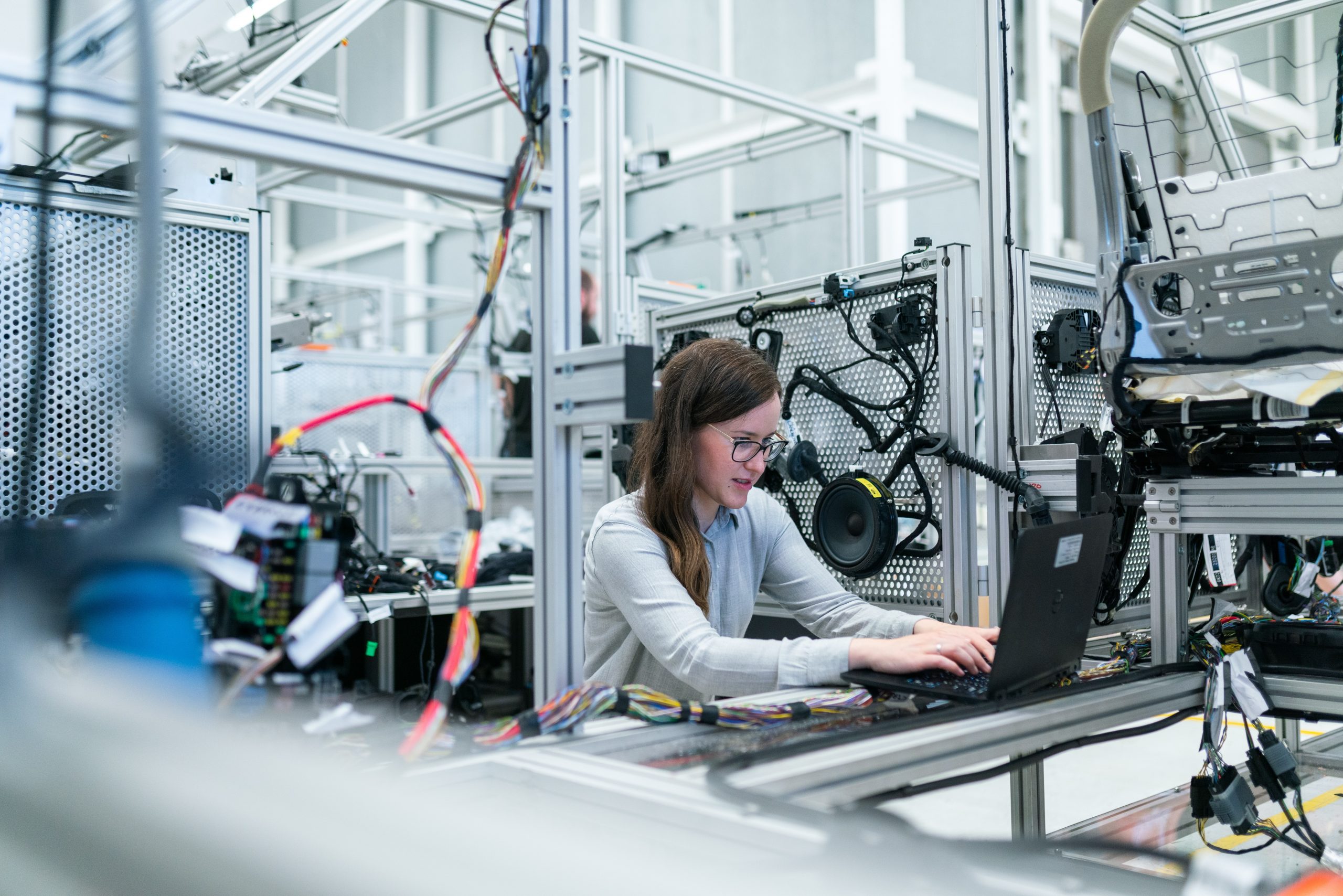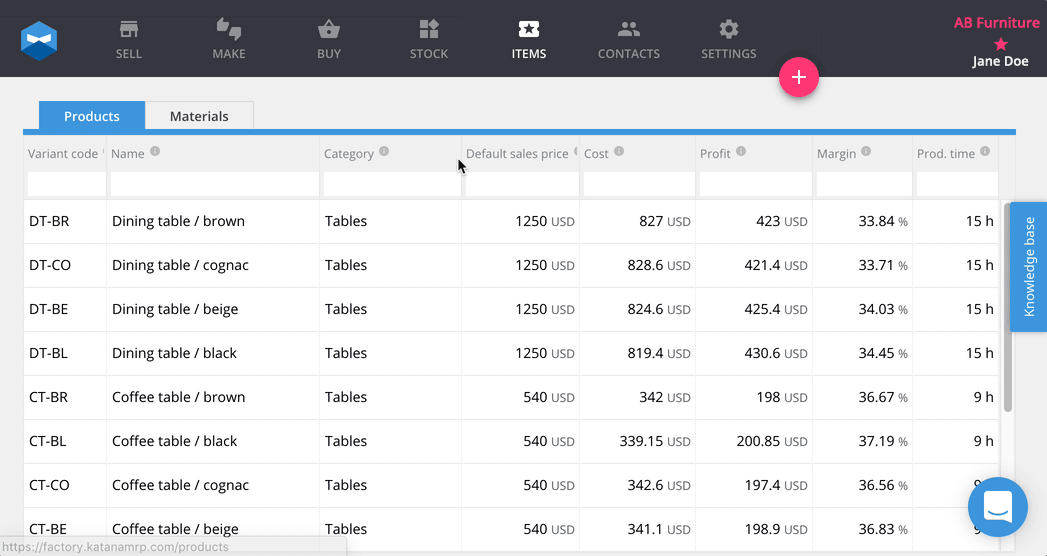Smart manufacturing: Don’t miss out on the Industrial Revolution
Smart manufacturing is going to be a crucial component for growth soon due to Industry 4.0. But what is smart manufacturing and how will we benefit from it?
Team Katana

Smart manufacturing is quickly going to become the norm as we experience a new industrial revolution, and if you don’t adapt to this latest trend in manufacturing, your business is ’s going to suffer. But what is smart manufacturing and how will we benefit from it?
What is Smart Manufacturing?
Smart manufacturing (SM) is an extensive term that applies to machinery or tools connected via the internet to help monitor production. The purpose of adopting smart manufacturing is to help manufacturers identify opportunities and weaknesses to improve their manufacturing processes.
However, smart manufacturing isn’t one particular thing, it’s a combination of different technologies, and solutions that together, form a process for achieving lean manufacturing, so isn’t something that you can directly implement into your production.
These elements of smart manufacturing are known as “enablers,” all of which are industrial internet of things (IoT) technology.
How can IoT be used in manufacturing could involve embedding sensors on machines of your production line to collect data on their operational status and performance to prevent stoppages from machinery malfunctions.
In the yesteryear of manufacturing, data collection would be saved on a localized database and used to analyze why machinery broke down as opposed to trying to prevent a breakdown from occurring.
Another example of how can IoT be used in manufacturing is via the introduction of artificial intelligence (AI) in your manufacturing processes, such as autonomous raw inventory management with cloud inventory software.
Regardless of how you decide to implement smart manufacturing, it’s going to be crucial for optimizing your production lines and increasing your profit margin.
In this article, we’re going to look into what is smart manufacturing and how will we benefit from it, focusing mostly on cloud-based smart manufacturing solutions, so you can better understand how to start using intelligent manufacturing.
How Smart Manufacturing Changed Over the Years

Intelligent manufacturing has come leaps and bounds when you look into how smart manufacturing changed over the years.
However, even though smart factory systems have improved, a lot of large-scale manufacturers still use legacy systems to maintain their business. Which, although once would have been the first smart manufacturing examples, are now archaic and inefficient.
A traditional intelligent manufacturing system would be localized to one factory, and operated via a business’s (expensive) intranet system.
In the past, manufacturers would have focused on a batch-and-queue manufacturing process, mass-producing products for make to stock, with the main goal to achieve an economy of scale and to maximize the utilization of machinery.
The issue with these older systems are:
— Smart factory owners become too scared to upgrade;
— An older intelligent manufacturing system is complicated to use; and
— Implementation and modification of these systems can set you back a pretty penny.
So, how smart manufacturing changed over the years is that it’s led why to the next industrial revolution:
This fourth industrial revolution concerns itself with the computerization of manufacturing for improved analytics and for repetitive tasks to be performed autonomously by AI or robotics.
So, that’s how smart manufacturing changed over the years. But what are the different types of smart manufacturing?
The Three Types of Smart Manufacturing Systems

Smart manufacturing exists in one of three categories:
Product and Control Solutions
This covers the development of automation products and services. Smart manufacturing examples of companies would be ABB and Siemens.
IT Solutions
This covers how the IoT can be used in manufacturing, which will help with asset management, helping build control, monitoring, and analytical infrastructures. More smart manufacturing examples would be SAS, Oracle, and Intel.
Connectivity Solutions
This will be your telecom service provider that helps create a smooth flow of data for asset management. So, this will be the companies like Cisco, Huawei, and AT&T.
For this article, we’ll be looking into IT solutions since manufacturing trends and predictions show that SMEs and larger corporations will be at the very least able to introduce IoT solutions into their businesses since this encompasses:
— AI;
— Blockchain in manufacturing;
— Predictive maintenance; and
— Cyber Security.
Regardless of what you want to optimize, smart manufacturing is all about data collection, that’ll dictate what a smart factory will need to do and when to do it (autonomously or with human intervention).
But, let’s continue to explore what is smart manufacturing and how will we benefit from it.
PRO TIP: The practice of lean manufacturing lends itself well to smart production. You can check out lean manufacturing tools as a way of converting your business into a smart factory.
What Are the Benefits of Smart Time Manufacturing with Real Time Monitoring?

Now you’re aware of what is a smart factory and what is smart technology in manufacturing, it’s time to understand the benefits of adopting smart manufacturing into your business.
1. Automated Data
As mentioned before, when looking into the purpose of what is smart manufacturing platform, it’s all about data collection. An intelligent manufacturing system will collect data, so managers or business owners can analyze their production lines to make more informed decisions about production.
2. Predictive Maintenance
A strong offense is a strong defense! This is where your smart manufacturing tools will analyze the performance of tools and machinery, so you can maintain equipment before they breakdown and cause even more problems.
3. Reduced Costs
Smart manufacturing tools are going to help you practice lean inventory techniques, meaning you can identify waste (be that leftovers of materials or poor routing manufacturing) and eliminate it from your factory floor. But, not only that, you’ll be able to lower your carrying costs, dead stock, and use data to improve your demand planning, which will save you capital in the long run.
4. Reduced Workflow Challenges
Improve your bottleneck management by having real-time data of your manufacturing lead time.
5. Integrations
As mentioned before, the purpose of smart manufacturing is to create a channel of communication between all your tools and platforms. By using Smart Manufacturing Software, you can integrate your e-commerce platforms, accounting software, and other tools to create a smooth workflow between all your different processes.
6. Greener Processes
80% of Smart Manufacturing Software users practice green manufacturing. Smart production tools allow customers to improve how they manufacture their products and how they get those products to the customers.
So, we’ve looked into what is smart manufacturing and how will we benefit from it. But all this information probably sounds intimidating, giving how active an intelligent manufacturing system will be, it must be difficult to implement into production?
How to Implement Smart Manufacturing into Your Business?

We’re going to look into Smart Manufacturing Software, as it’s the most accessible solution for setting up a smart factory, that can be adopted by any business in the manufacturing industries.
Also, this is probably the easiest to introduce into your business, as the implementation of IoT is just an ecosystem where all your tools, platforms, and devices are interconnected.
The goal of implementing smart manufacturing isn’t to increase your production, but to make your backend process more efficient.
To do this, you’ll need a tool that can track your operations, inventory levels, and resources, so you can get data on the performance of each of these areas.
These tools can be either:
— Accessed via MRP software;
— Installed and accessed via a desktop; or
— To be custom-built or accessed via an intranet system.
Regardless of how you get Smart Manufacturing Software implemented, it can be difficult if you’re already using a legacy system or have your own methods since your business is already accustomed to one way of working.
But, the sooner you get integrated with a modern smart factory, the easier it’ll be to introduce it into your processes and train employees to use the new software.
PRO TIP: Be sure to check out software comparison sites to decide which tool you should get set up with, such as Capterra’s top 20 MRPs for manufacturing businesses.
Katana Cloud Inventory Software

Your quest for setting up a smart factory shouldn’t be a long one, and we’ve got a shortcut to intelligent manufacturing for you.
Introducing Katana Cloud Inventory Software, an inexpensive all in one tool built by manufacturers, specifically for manufacturers, looking to optimize their smart production by giving them control over:
— Sales and manufacturing orders;
— Inventory management; and
— Production planning and scheduling.
But what is smart technology in manufacturing, and what separates Katana from any other intelligent manufacturing system on the market?
The purpose of smart time manufacturing with real time monitoring is to automate repetitive tasks and backend responsibilities, so you can focus more of your resources on growing your business and improving the efficiency of your productions.
Katana helps you achieve this with its:
Auto-booking system
As it stands, you receive an order from a customer (huzzah!), and now you have to delve into your inventory, taking what you need, and manually updating whichever system you use to track inventory. What a hassle, right?
Katana’s auto-booking system eliminates this time-consuming task by automatically allocating available raw materials and finished goods to your open orders. Not only that, but Katana will also automatically calculate your manufacturing costs, estimate delivery times, and monitor the operational progress of each manufacturing order.
Priority-Based Production Management
We don’t need to tell you how much of a struggle it is to plan and schedule your production, never mind when something goes awry, or a VIP order comes in, forcing you to go back and redevelop the entire schedule.
Firstly, Katana automatically schedules production in the order jobs are generated. So, no worries there.
But, let’s say you need to reschedule for whatever reason, our nifty drag-and-drop feature allows you to reschedule your workflow, and the auto-booking system will even redistribute your raw materials, so you can quickly get back onto the shop floor and continue manufacturing.

E-Commerce and Accounting Integrations
Finally, according to our research, 62% of Smart Manufacturing Software users are direct-to-consumer (D2C) businesses, and 52% of those use Shopify for selling online.
When it comes to answering what is smart manufacturing platform, the main function should be the ability to create synergy between a manufacturer’s existing tools and processes.
If you’ve been using Shopify inventory management or WooCommerce inventory management, you already know that these apps are lacking features when it comes to manufacturing.
Katana is able to integrate and synchronize with your e-commerce platforms and accounting software (such as QuickBooks or Xero) to create a smooth workflow between your sales, manufacturing, and financing.
These are just some of the benefits you can experience when upgrading your shop floor to a smart factory.
But, for a full in-depth look into the functionalities of Smart Manufacturing Software, be sure to check out the video below.
Conclusion

So, there you have it! Everything you need to know about what is smart manufacturing and how will we benefit from it.
However, the only way you can truly benefit from integrating smart manufacturing into your business is to compare the market and to find an intelligent manufacturing system that offers trails and demos, so you can better understand if the software is suitable for your business.
Request a demo so you can experience firsthand the power of smart production.
And that’s it, you’ll now have access to a smart intelligent system and would have taken your first step toward setting up your smart factory.
From here, it’s just a matter of setting up your:
— Bill of materials (BOMs)
— SKUs
— Multi-location inventory warehouses
Once you’ve done that, you’ll be well on your way to using smart manufacturing.
And until then, happy smart manufacturing.
Team Katana
Table of contents
Get inventory trends, news, and tips every month
Get visibility over your sales and stock
Wave goodbye to uncertainty by using Katana Cloud Inventory for total inventory control
